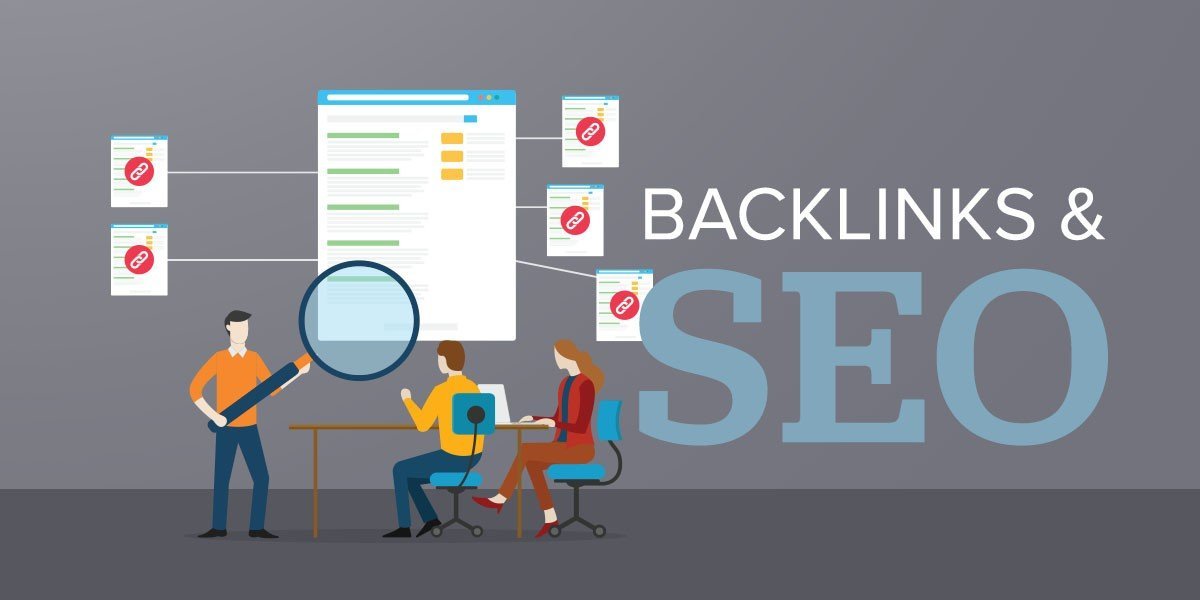How to Get Backlinks – Effective Strategies
Hey there, SEO warriors! Let’s dive into the world of backlinks and why they are your secret weapon for ranking high on search engines. Backlinks, simply put, are links from other websites that point to your site. They act like votes of confidence, signaling to search engines that your content is valuable and trustworthy. The more high-quality backlinks you have, the more likely you are to climb the ranks of search engine results pages (SERPs).
But here’s the catch: not all backlinks are created equal. You want backlinks from reputable, relevant sites to truly boost your SEO. That’s where effective strategies come into play. So, buckle up as we explore some proven techniques on how to get backlinks and give your website the boost it deserves!

Understanding Backlinks
Alright, let’s get into the nitty-gritty of backlinks. Think of backlinks as the digital version of word-of-mouth recommendations. When someone links to your site, it’s like they’re giving your content a thumbs-up, telling others, “Hey, this is worth checking out!”
What Are Backlinks?
Backlinks, also known as inbound or incoming links, are links from one website to a page on another website. They are crucial for SEO because they represent a “vote of confidence” from one site to another. In essence, each backlink is a signal to search engines that content is credible and valuable.
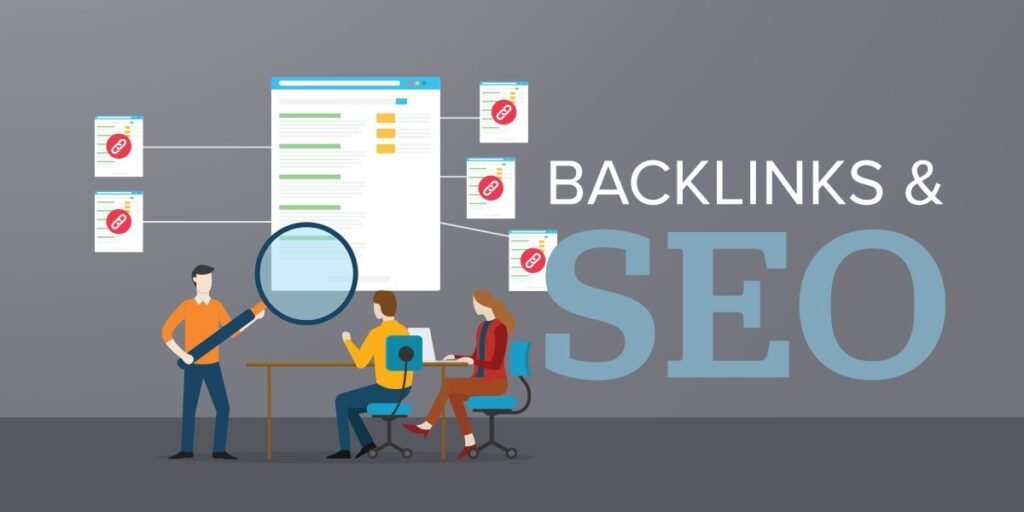
The Role of Backlinks in SEO
Search engines like Google use backlinks as a way to gauge the authority and relevance of a website. Here’s why backlinks are essential:
- Improved Search Rankings: Websites with a high number of quality backlinks tend to rank higher in search engine results. It’s like getting a seal of approval from other trusted sites.
- Increased Visibility: Backlinks can drive traffic from other websites, increasing your site’s visibility and potential for conversions.
- Faster Indexing: Search engines use backlinks to discover new web pages. If your site is linked from a well-indexed site, it can help search engines find and index your content faster.
- Authority and Credibility: Having backlinks from reputable sites can enhance your site’s credibility and domain authority, making it more trusted in the eyes of both search engines and users.
In a nutshell, backlinks are a cornerstone of SEO. They not only help improve your search engine rankings but also drive traffic and build your site’s authority.
Importance of Backlinks for Off-Page SEO
Alright, folks, let’s dive deeper into why backlinks are like the secret sauce for your Off-Page SEO success. We touched on it briefly, but now let’s get into the specifics of why these little links are so crucial for boosting your domain authority and search engine rankings.
Boosting Domain Authority: Domain authority (DA) is a metric that indicates the strength of your website’s overall authority on a scale from 1 to 100. Think of it as your site’s reputation score in the digital world. Backlinks play a pivotal role in enhancing this score. Here’s how:
- Endorsement from Trusted Sites: When authoritative sites link to your content, it’s like getting a nod of approval from a trusted source. This endorsement signals to search engines that your content is valuable and credible.
- Quality Over Quantity: Not all backlinks are created equal. A single backlink from a high-authority site can be more impactful than numerous links from low-quality sites. Quality backlinks improve your DA more significantly.
- Relevance Matters: Links from sites that are relevant to your industry or niche carry more weight. They show that your content is pertinent and useful within your field, further boosting your authority.
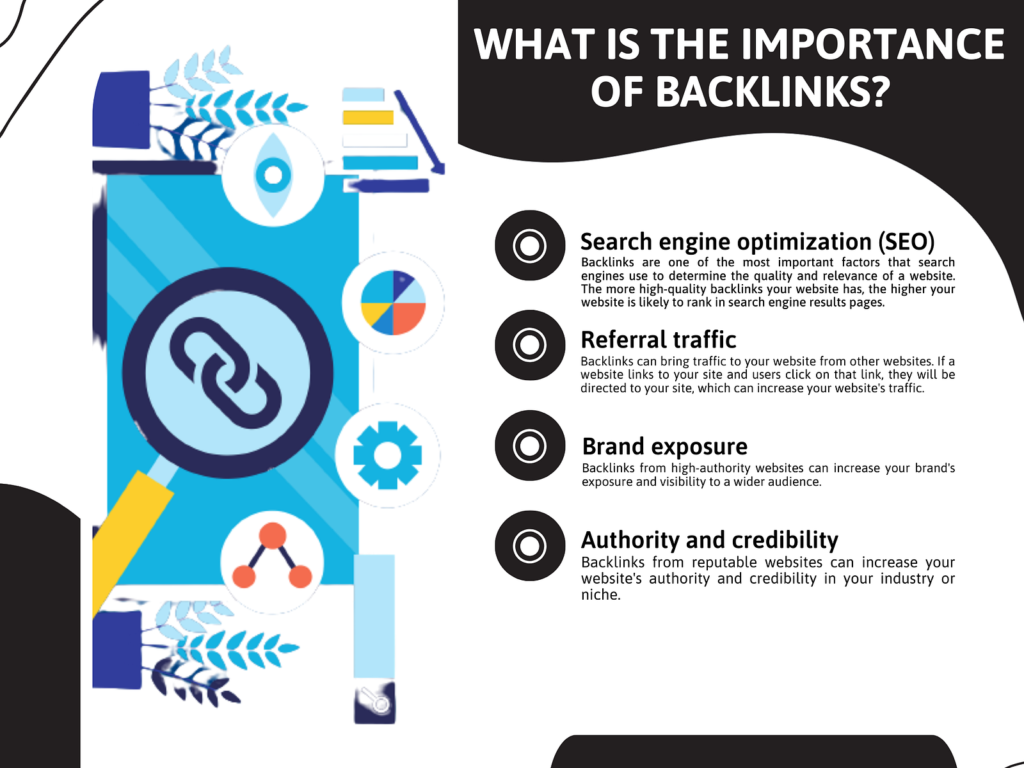
Climbing the Search Engine Rankings
Backlinks are a critical factor in search engine algorithms. Here’s why they help you climb the ranks:
- Algorithm Signals: Search engines like Google use complex algorithms to determine the relevance and quality of content. Backlinks are one of the key signals these algorithms use. More high-quality backlinks generally mean better rankings.
- Traffic Boost: Backlinks from popular sites can drive significant referral traffic to your site. This influx of visitors can lead to increased engagement and conversions, which further signals to search engines that your content is valuable.
- Keyword Association: When other sites link to your content with specific anchor text (the clickable text in a hyperlink), it helps search engines understand what your page is about. This can improve your rankings for those keywords.
- Link Diversity: A diverse backlink profile, with links coming from various domains and IP addresses, indicates a natural link-building process. Search engines favor this diversity and may reward it with higher rankings.
- Long-Term Benefits: Backlinks are not just a short-term strategy. High-quality backlinks can continue to drive traffic and boost your rankings over time, providing long-lasting SEO benefits.

In essence, backlinks are a cornerstone of SEO strategy. They help build your domain authority, signal your content’s value to search engines, and improve your overall online visibility.
Effective Strategies for Getting Backlinks
Alright, now we’re getting to the meat of it! Let’s break down some proven strategies to acquire those high-quality backlinks that’ll take your SEO game to the next level. Here are several techniques you can use to build a robust backlink profile for your sites off-page SEO:
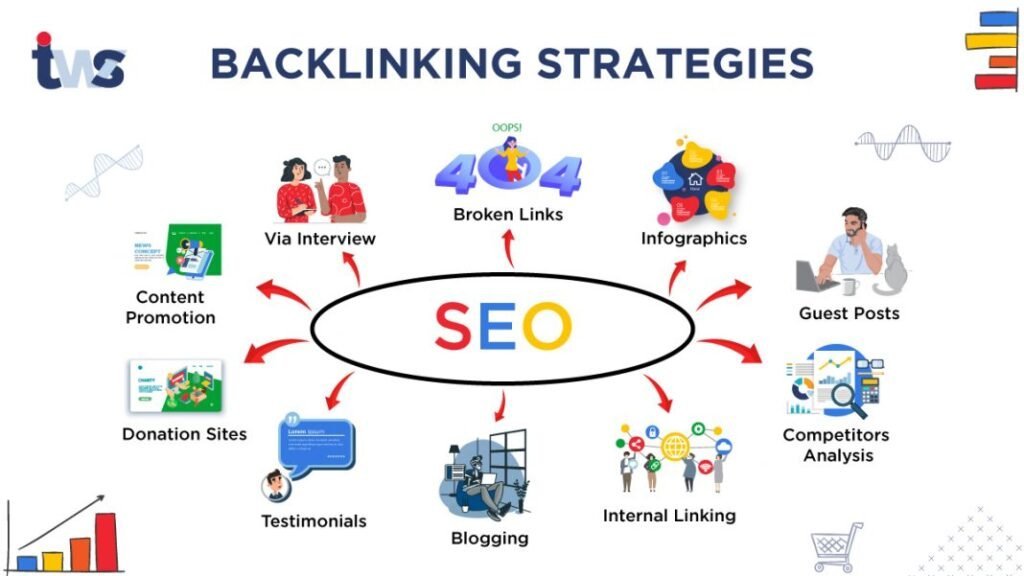
1. Create High-Quality, Shareable Content
Why It Works: Content that is informative, engaging, and valuable naturally attracts backlinks. People love sharing good content.
How to Do It:
- Write Comprehensive Guides: Create in-depth articles or guides that cover a topic extensively. These become go-to resources that others will want to link to.
- Original Research and Data: Publish unique research, surveys, or data reports. Original data is often cited by others, leading to backlinks.
- Infographics: Visual content like infographics are highly shareable. They simplify complex information and are often embedded in other articles with a backlink to the original source.
2. Guest Blogging
Why It Works: Guest blogging allows you to reach a new audience and gain backlinks from established sites in your niche.
How to Do It:
- Identify Relevant Blogs: Look for blogs in your industry that accept guest posts.
- Pitch Valuable Topics: Propose topics that would be beneficial to the blog’s audience. Make sure they align with your expertise.
- Include Contextual Links: When writing the guest post, naturally include links back to your relevant content on your site.
3. Broken Link Building
Why It Works: This involves finding broken links on other websites and suggesting your content as a replacement, which helps both you and the site owner.
How to Do It:
- Find Broken Links: Use tools like Ahrefs or Screaming Frog to find broken links on websites in your niche.
- Create or Suggest Replacement Content: Ensure you have content that matches or improves upon what was originally linked to.
- Reach Out to Webmasters: Politely inform the webmaster about the broken link and suggest your content as a replacement.
4. Skyscraper Technique
Why It Works: The skyscraper technique involves finding top-performing content in your niche and creating something even better.
How to Do It:
- Identify Popular Content: Use tools like BuzzSumo to find content with a high number of backlinks.
- Create Superior Content: Make your version more comprehensive, up-to-date, and visually appealing.
- Promote Your Content: Reach out to sites that linked to the original content and suggest they link to your improved version.
5. Leverage Social Media
Why It Works: Social media platforms can amplify your content’s reach and increase the chances of earning backlinks.
How to Do It:
- Share Your Content: Regularly post your content on social media platforms.
- Engage with Influencers: Tag and interact with influencers in your niche who might share your content with their followers.
- Join Relevant Groups: Participate in industry-specific groups on platforms like LinkedIn or Facebook and share your content where appropriate.
6. Collaborate with Influencers
Why It Works: Influencers have large followings and can help promote your content, leading to more backlinks.
How to Do It:
- Identify Key Influencers: Find influencers in your niche with a significant following.
- Propose Collaboration: Offer to collaborate on content, such as co-authoring articles, interviews, or webinars.
- Mutual Promotion: Ensure both parties promote the content, linking back to each other’s sites.
7. Utilize Online Communities and Forums
Why It Works: Engaging in communities related to your niche can help you share your expertise and link back to your content naturally.
How to Do It:
- Join Relevant Forums: Participate in forums like Reddit, Quora, or niche-specific communities.
- Provide Value: Answer questions and provide helpful information, including links to your content where relevant and allowed.
- Be Genuine: Focus on being helpful and not overly promotional to build trust and credibility.
Create High-Quality Content
Creating high-quality, valuable content is the foundation of any successful backlink strategy. When your content is informative, engaging, and well-researched, it naturally attracts backlinks from other websites. People want to link to resources that offer their audience real value, whether it’s through in-depth guides, original research, or visually appealing infographics. High-quality content positions you as an authority in your niche, encourages organic sharing, and drives traffic to your site, all of which contribute to improving your search engine rankings. In short, exceptional content is your ticket to earning those coveted backlinks.
Content Types That Earn Backlinks
Certain types of content are more likely to attract backlinks due to their inherent value and shareability. Here are a few examples:
- Guides and Tutorials: Comprehensive, step-by-step guides that cover a topic in-depth.
- Infographics: Visually engaging graphics that simplify complex information and are easy to share.
- Research Studies: Original research or data reports that provide unique insights and statistics.
- Case Studies: Detailed analyses of real-world applications or success stories.
- Listicles: Curated lists of tips, tools, or resources that are easy to digest and share.

These content types are highly valued by readers and other content creators, making them prime candidates for attracting backlinks.
Content Promotion Techniques
Promoting your content effectively is crucial to reaching a wider audience and attracting backlinks. Here are some techniques to boost your content’s visibility:
- Social Media Sharing: Post your content on social media platforms and engage with your audience to encourage sharing.
- Email Outreach: Send personalized emails to industry influencers and bloggers, informing them about your new content and how it can benefit their audience.
- Guest Blogging: Write guest posts for reputable sites in your niche, including links back to your content.
- Online Communities: Share your content in relevant forums, groups, and Q&A sites like Reddit, Quora, and LinkedIn.
- Collaborations: Partner with influencers or other brands to co-create and promote content, leveraging each other’s audiences.

By employing these techniques, you can enhance your content’s reach, drive more traffic, and increase the likelihood of earning valuable backlinks.
Guest Blogging
Guest blogging offers numerous benefits, including increased visibility, enhanced authority, and valuable backlinks. By contributing to reputable websites in your niche, you can tap into new audiences, drive targeted traffic to your site, and build relationships with influential figures in your industry.
Additionally, guest posts with contextual backlinks improve your site’s SEO, boosting your search engine rankings. To secure guest posts, focus on providing valuable, well-researched content that aligns with the host site’s audience. This not only enhances your credibility but also makes it more likely for site owners to accept your submissions.

Finding Guest Blogging Opportunities
- Search Relevant Sites: Use search queries like “your niche + write for us” or “your niche + guest post guidelines.”
- Evaluate Websites: Ensure the sites have good domain authority and an engaged audience.
- Personalized Outreach: Approach site owners with a personalized email highlighting your expertise and previous work.
- Networking: Participate in industry forums and social media groups to uncover opportunities.
- Use Tools: Utilize tools like BuzzSumo or Ahrefs to find popular blogs that accept guest posts.

Crafting Pitch and Content
Crafting a Pitch
- Personalize the Greeting: Address the site owner by name.
- Introduce Yourself: Briefly explain who you are and your expertise.
- Propose Topics: Present 2-3 topic ideas that align with the host’s audience and provide value.
- Showcase Your Work: Include links to your best articles to demonstrate your writing skills.
- Explain the Benefit: Highlight how your content will benefit their readers.
Creating High-Quality Guest Post Content
- Follow Guidelines: Adhere to the host site’s style and content guidelines.
- Engaging Headline: Craft a compelling and relevant headline.
- Thorough Research: Back your content with data, examples, and insights.
- Value-Driven Content: Ensure your post provides practical, actionable advice.
- Originality: Create unique content that hasn’t been covered extensively elsewhere.
- Quality Writing: Use clear, engaging, and error-free language to maintain credibility.


Leverage Influencer Outreach
Engaging with influencers is a powerful way to promote your content and acquire high-quality backlinks. Influencers have established credibility and large followings, which can amplify your reach. By collaborating with influencers, you can gain access to their audience, driving traffic to your site and earning valuable backlinks. Start by offering something of value, like exclusive content or insights, to incentivize influencers to share your content. Personalized outreach and genuine engagement are key to successful influencer partnerships.



Identifying Relevant Influencers
- Use Tools: Utilize tools like BuzzSumo, Followerwonk, and Klear to find influencers in your niche.
- Analyze Engagement: Look for influencers with high engagement rates rather than just large follower counts.
- Content Alignment: Ensure the influencer’s content aligns with your brand and target audience.
- Research Social Media: Search relevant hashtags and keywords on social media platforms to discover active influencers.
- Check Influencer Networks: Explore influencer networks and platforms to find potential collaborators.
Building Relationships
- Personalized Outreach: Send personalized messages that highlight why you admire their work and how your collaboration would be mutually beneficial.
- Engage on Social Media: Interact with their content by liking, commenting, and sharing their posts.
- Provide Value: Offer exclusive content, insights, or resources that can benefit them and their audience.
- Collaborate on Content: Propose joint projects like co-authored articles, webinars, or interviews.
- Maintain Contact: Keep the relationship ongoing by regularly engaging with their content and providing value without always asking for something in return.
By identifying the right influencers and building meaningful relationships, you can effectively leverage their reach to promote your content and secure valuable backlinks.
Use Broken Link Building
Broken link building is an effective strategy to acquire backlinks by identifying broken links on other websites and suggesting your content as a replacement. This approach not only helps you gain backlinks but also assists site owners in maintaining their site’s integrity by fixing dead links. Here’s how you can leverage broken link building to boost your SEO efforts.
Finding Broken Links
- Use SEO Tools: Tools like Ahrefs, Screaming Frog, and SEMrush can help you find broken links on authoritative websites. Simply enter a domain, and these tools will scan for dead links.
- Google Search Operators: Use search operators like “site.com + keyword + ‘404’” to find pages with broken links.
- Analyze Competitor Sites: Check your competitors’ backlinks to find broken links that you can capitalize on.
- Check Resource Pages: Resource pages and directories are often littered with broken links. Use tools to scan these pages for opportunities.
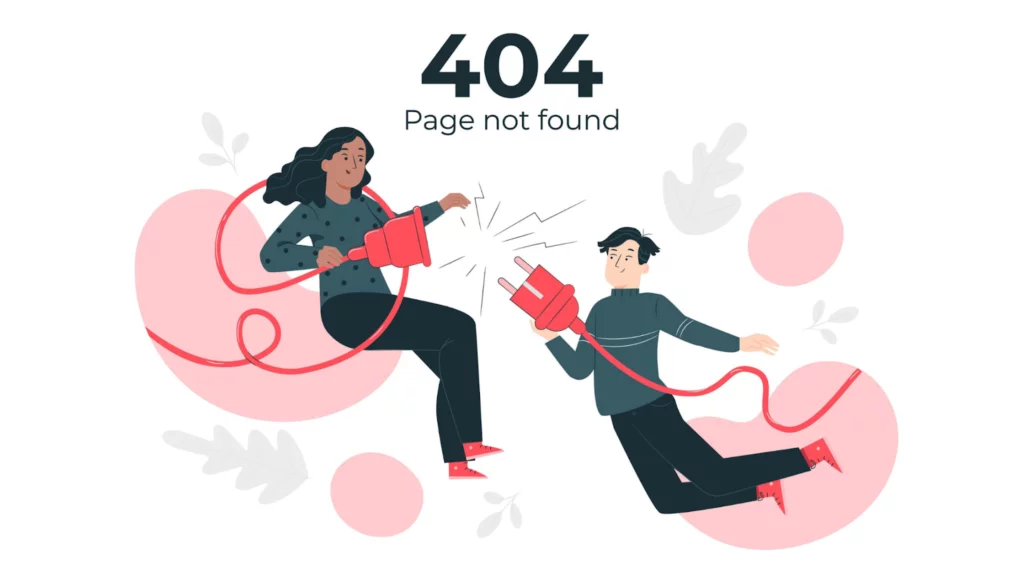
Reaching Out to Site Owners
- Craft a Personalized Email: Address the site owner by name and mention the specific broken link you found. Personalization increases the chances of your email being read and considered.
- Highlight the Problem: Clearly explain where the broken link is and why it’s a problem for their site.
- Offer a Solution: Suggest your relevant content as a replacement. Make sure your content is high-quality and directly related to the broken link’s context.
- Be Polite and Professional: Keep your tone friendly and professional. Thank them for their time and consideration.
- Follow Up: If you don’t receive a response within a week or two, send a polite follow-up email. Persistence can pay off.

Harness the Power of Social Media
Social media platforms are powerful tools for sharing content and attracting backlinks. By leveraging social media, you can increase your content’s visibility, drive traffic, and encourage others to link to your site. The key is to create and promote content that resonates with your audience and prompts them to share it widely. Engaging with your audience on these platforms can further amplify your reach and backlink potential.

Creating Shareable Content
- Catchy Headlines: Craft attention-grabbing headlines that entice users to click and share.
- Visual Appeal: Use eye-catching images, infographics, and videos to make your content stand out in social feeds.
- Valuable Information: Provide useful, actionable insights or entertainment that your audience finds valuable.
- Brevity and Clarity: Keep your content concise and easy to digest, making it more likely to be shared.
- Call to Action: Encourage sharing with clear calls to action (CTAs) within your content.
Engaging with Your Audience
- Respond Promptly: Engage with comments and messages quickly to foster a sense of community.
- Ask Questions: Post questions and polls to stimulate discussion and interaction.
- User-Generated Content: Encourage followers to create and share their own content related to your brand.
- Share and Tag: Share user-generated content and tag the creators, increasing engagement and reach.
- Consistent Posting: Maintain a regular posting schedule to keep your audience engaged and your content visible.
Participate in Industry Forums and Communities
Engaging in industry-specific forums and online communities is a great way to build relationships, establish authority, and acquire backlinks. By actively participating in these platforms, you can connect with like-minded individuals, share your knowledge, and drive traffic to your site. The key is to provide genuine value in your interactions and strategically link to your content where it can help others.

Providing Value
- Be Helpful: Offer well-thought-out answers and solutions to questions and problems posed by community members.
- Stay Relevant: Ensure your contributions are relevant to the discussion and add real value.
- Build Trust: Consistently providing valuable insights helps you build trust and authority within the community.
- Avoid Self-Promotion: Focus on helping others rather than promoting your content; let your expertise shine through your contributions.
- Follow Community Guidelines: Respect the rules and norms of the forums to maintain a positive reputation.
Sharing Your Expertise
- Be Authentic: Share your experiences and insights genuinely, showcasing your expertise.
- Link Naturally: When appropriate, link to your content as a resource that adds value to the discussion.
- Use Signature Links: If the forum allows, use a signature link that includes a link to your site.
- Start Discussions: Initiate discussions on topics you are knowledgeable about, subtly incorporating links to your content.
- Engage Regularly: Stay active and consistent in your participation to keep your profile visible and respected.
Use Local Business Directories and Citations
Listing your business in local directories and citation sites is a powerful way to build local backlinks, improve your local SEO, and increase your visibility in local search results. These listings help search engines verify your business information, enhancing your online credibility and trustworthiness. By appearing in local directories, you also make it easier for potential customers to find and contact you.
Finding Relevant Directories
- Local Directories: Search for local business directories relevant to your area, such as Yelp, Yellow Pages, and local chamber of commerce sites.
- Industry-Specific Directories: Look for directories specific to your industry that cater to local businesses.
- Google My Business: Claim and optimize your Google My Business listing to enhance local visibility.
- Review Sites: List your business on popular review sites like TripAdvisor, Angie’s List, and Trustpilot.
- Use Tools: Utilize tools like Moz Local or BrightLocal to find and manage local citation opportunities.
Ensuring Consistency
- Accurate Information: Ensure your business name, address, and phone number (NAP) are consistent across all listings.
- Complete Profiles: Fill out all available fields in each directory listing, including website URL, hours of operation, and services offered.
- Monitor Listings: Regularly check your listings for accuracy and update any changes promptly.
- Branding Consistency: Use the same logo, descriptions, and branding elements to maintain a uniform online presence.
- Respond to Reviews: Engage with reviews and feedback on these platforms to enhance your business reputation.
Conduct Competitor Backlink Analysis
Analyzing your competitors’ backlinks is a savvy way to uncover opportunities for your own backlink acquisition. By understanding where their backlinks come from, you can identify high-value sites and strategies that you can replicate. Here’s how you can effectively conduct a competitor backlink analysis and use it to boost your SEO efforts.
Tools for Backlink Analysis
- Ahrefs: This tool provides comprehensive backlink analysis, showing you where competitors’ links come from, their anchor text, and the linking domain’s authority.
- SEMrush: SEMrush offers detailed reports on competitors’ backlinks, including the number of referring domains, the quality of links, and lost or new links.
- Moz Link Explorer: Moz’s tool helps you see who is linking to your competitors, the domain authority of those links, and the anchor text used.
- Majestic: Known for its extensive backlink database, Majestic provides insights into the backlink profiles of your competitors, including trust and citation flow metrics.
- SpyFu: This tool allows you to see the backlinks your competitors have and offers insights into their overall SEO strategy.
Replicating Competitor Strategies
- Identify High-Quality Backlinks: Use the tools to identify high-quality backlinks that your competitors have. Look for links from authoritative and relevant sites.
- Analyze Link Context: Understand the context in which your competitors’ links appear. Are they from guest posts, resource pages, or directory listings?
- Reach Out to Linking Sites: Approach the websites linking to your competitors. Offer your own high-quality, relevant content as an alternative or addition.
- Create Superior Content: If a competitor has a backlink from a piece of content, create an even better version of that content. Reach out to the same site and suggest your superior content.
- Leverage Similar Directories and Listings: Ensure your site is listed in the same directories or resource pages as your competitors.
- Monitor Competitors’ New Links: Keep an eye on newly acquired backlinks by your competitors. This can reveal new opportunities and strategies they are using.
By systematically analyzing and replicating successful competitor strategies, you can strategically acquire high-quality backlinks and enhance your site’s SEO performance.
Tools and Resources for Backlink Acquisition
Acquiring high-quality backlinks requires the right set of tools and resources to streamline your efforts and maximize your results. Here are some recommended tools and resources that can help you in your backlink acquisition journey:
1. Ahrefs
- Features: Comprehensive backlink analysis, competitor research, and site audit capabilities.
- Use Case: Identify backlink opportunities, analyze competitor backlinks, and monitor your own backlink profile.
2. SEMrush
- Features: Backlink analysis, keyword research, site audit, and content marketing tools.
- Use Case: Conduct competitor backlink analysis, find backlink opportunities, and track your backlink progress.
3. Moz Link Explorer
- Features: Backlink research, domain authority metrics, and spam score analysis.
- Use Case: Discover who is linking to your competitors, analyze link quality, and improve your own link-building strategy.
4. Majestic
- Features: Extensive backlink database, trust and citation flow metrics, and link profile analysis.
- Use Case: Evaluate the quality of backlinks, understand linking patterns, and identify authoritative sites for link building.
5. BuzzSumo
- Features: Content discovery, influencer identification, and backlink tracking.
- Use Case: Find popular content that attracts backlinks, identify influencers in your niche, and track backlink performance.
6. Google Search Console
- Features: Monitor site performance, track backlinks, and identify issues.
- Use Case: Track your site’s backlinks, analyze which content is attracting links, and fix any link-related issues.
7. Screaming Frog SEO Spider
- Features: Site crawling, broken link detection, and SEO audits.
- Use Case: Find broken links on your site and on other websites for link-building opportunities.
8. Hunter.io
- Features: Email finder and verifier.
- Use Case: Find email addresses of site owners and influencers for outreach and link-building campaigns.
9. NinjaOutreach
- Features: Influencer outreach, email campaigns, and backlink tracking.
- Use Case: Manage outreach campaigns, build relationships with influencers, and track backlink acquisition.
10. HARO (Help a Reporter Out)
- Features: Connects journalists with expert sources.
- Use Case: Get featured in articles and earn backlinks by responding to journalists’ queries relevant to your expertise.
By leveraging these tools and resources, you can effectively streamline your backlink acquisition efforts, track your progress, and build a robust backlink profile that enhances your SEO performance.
Backlink Analysis Tools
1. Ahrefs
- Features: Comprehensive backlink analysis, site explorer, keyword research, content explorer, and rank tracking.
- Benefits: Detailed insights into your backlink profile, competitor analysis, and identification of new backlink opportunities.
2. SEMrush
- Features: Backlink analytics, backlink audit, keyword research, site audit, and position tracking.
- Benefits: In-depth competitor backlink analysis, toxic backlink identification, and tracking of new and lost backlinks.
3. Moz Link Explorer
- Features: Backlink research, domain authority metrics, spam score analysis, and link tracking.
- Benefits: Discover linking sites, evaluate link quality, and understand the impact of your backlinks on domain authority.
4. Majestic
- Features: Extensive backlink database, trust and citation flow metrics, link profile analysis, and historic index.
- Benefits: Assess backlink quality, visualize link profiles, and explore historic backlink data.
5. SpyFu
- Features: Competitor backlink analysis, keyword research, PPC analysis, and domain comparisons.
- Benefits: Gain insights into competitors’ backlink strategies, discover high-value backlinks, and compare domain link profiles.
Content Promotion Tools
1. BuzzSumo
- Features: Content discovery, influencer identification, social engagement tracking, and backlink tracking.
- Benefits: Find trending content, identify key influencers, track content performance, and discover backlink opportunities.
2. Hootsuite
- Features: Social media scheduling, monitoring, analytics, and team collaboration.
- Benefits: Schedule and promote content across multiple social platforms, track engagement, and measure impact.
3. Buffer
- Features: Social media scheduling, analytics, and team collaboration.
- Benefits: Plan and schedule content, track performance, and optimize social media engagement.
4. CoSchedule
- Features: Marketing calendar, social media scheduling, content organization, and analytics.
- Benefits: Organize and streamline content promotion, track social media performance, and improve content marketing efficiency.
5. BuzzStream
- Features: Outreach management, influencer research, email tracking, and campaign management.
- Benefits: Manage outreach campaigns, build relationships with influencers, and track email performance.
Outreach and Relationship Management Tools
1. NinjaOutreach
- Features: Influencer outreach, email campaigns, CRM, and backlink tracking.
- Benefits: Automate outreach, manage influencer relationships, and track backlink acquisition progress.
2. Hunter.io
- Features: Email finder, email verifier, email campaign management, and lead generation.
- Benefits: Find and verify email addresses, manage outreach campaigns, and build a database of potential contacts.
3. Pitchbox
- Features: Influencer outreach, email templates, campaign tracking, and CRM.
- Benefits: Automate personalized outreach, track campaign performance, and manage influencer relationships.
4. BuzzStream
- Features: Outreach management, contact research, email tracking, and link building.
- Benefits: Streamline outreach processes, manage relationships with site owners, and monitor link-building efforts.
5. Mailshake
- Features: Cold email campaigns, follow-up automation, and analytics.
- Benefits: Automate follow-ups, track email performance, and improve outreach efficiency.
By utilizing these tools, you can effectively analyze backlinks, promote your content, and manage outreach efforts to build strong relationships and acquire high-quality backlinks.
Conclusion
Effective backlink acquisition is crucial for boosting your website’s SEO, improving domain authority, and driving organic traffic. By implementing these strategies, you can build a robust backlink profile that enhances your online presence and search engine rankings. Remember, the quality of your backlinks matters more than the quantity, so focus on acquiring links from reputable, relevant sites. Start leveraging these tips today to see significant improvements in your SEO efforts.
Recap of Key Strategies
- Create High-Quality Content: Develop valuable, shareable content like guides, infographics, and research studies.
- Guest Blogging: Contribute to reputable websites in your niche to gain visibility and backlinks.
- Leverage Influencer Outreach: Engage with influencers to promote your content and earn backlinks.
- Use Broken Link Building: Find and fix broken links on other websites by offering your content as a replacement.
- Conduct Competitor Backlink Analysis: Analyze competitors’ backlinks to discover new opportunities.
- Utilize Backlink Analysis Tools: Employ tools like Ahrefs, SEMrush, and Moz for comprehensive backlink analysis.
- Promote Content: Use tools like BuzzSumo and Hootsuite to amplify your content’s reach.
Next Steps for Backlink Acquisition
- Create a Content Plan: Outline a strategy for producing high-quality, shareable content that attracts backlinks.
- Identify Target Sites: Use backlink analysis tools to find high-authority sites in your niche for guest posting and outreach.
- Craft Personalized Outreach: Develop compelling pitches for guest blogging and broken link building.
- Engage with Influencers: Build relationships with influencers in your niche by offering value and collaborating on content.
- Monitor and Adjust: Regularly analyze your backlink profile using tools like Ahrefs and SEMrush to track progress and make necessary adjustments.

